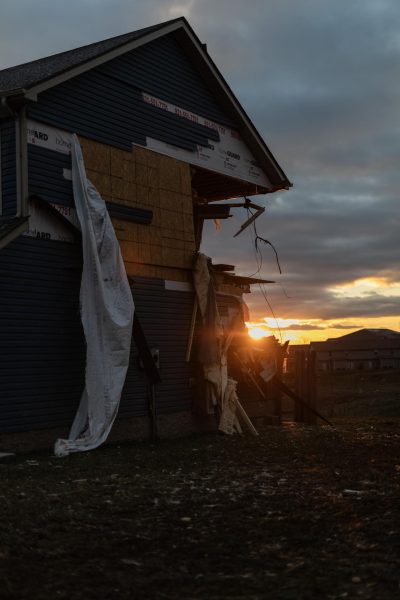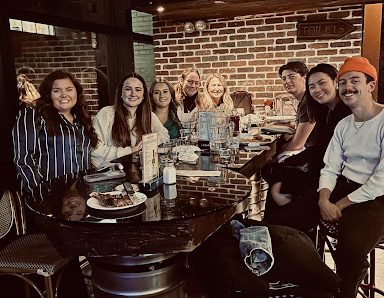Contaminated Wood Treatment site still hurting Carbondale community 100 years later
Environmental racism has been a long standing problem within society. The most common way it can be shown is the neglect of one the environmental health of one area due to it having a lower socioeconomic status.
Until the US Environmental Protection Agency (EPA) began setting regulations for polluting industries, wood treatment plants across the United States routinely neglected to address the dangerous waste byproducts from their sites which sometimes contaminate nearby communities.
Some wood plant treatment sites are known for being in marginalized communities exposing them to toxic chemicals like creosote, dioxin or PCP(pentachlorophenol).
Advertisement
According to the Agency for Toxic Substances and Disease Registry, PCP is commonly used as a pesticide and a wood preservative for products like railroad ties. Since PCP is carcinogenic when people are exposed to high concentrations of it, the risk of getting cancer in people exposed to it is increased.
A case study from the University of West Florida goes in depth on the history of the American Creosote Works Inc. site in Pensacola, Fla., and how it negatively impacted marginalized communities around it.
Wastewater from the superfund site would leak into surrounding streets and waterways of the block groups near the site.
Six out of the eight census blocks have a diversity count over 50% with most having an income lower than the national average. The other two blocks being mostly white with a diversity index of 15.6% estimating the others at 87.5%.
According to an article made by the news organization Inside Climate News on the Pensacola superfund site, it is known as one of the most dangerous wastes sites in the U.S. The site was used to make telephone poles, homes, ships, and bridges . In the early 20th century around 1902 until 1981, workers on the sites were ignored by America Creosote Works and their complaints of illnesses and skin irritations from chemical exposure.
Another site that exposed communities on a daily basis were the Kerr-McGee wood treatment sites. Their main base of operation was located in Oklahoma City and collectively treated almost half of the railroad ties used in America, according to ICW.
Kerr-McGee had multiple sites from New Mexico to Missouri. The contamination from the sites in Bossier City, La., Avoca, PA., and Columbus, Mo. that the groundwater and soil were contaminated.
Advertisement*
According to the EPA the site on Columbus Mo, is currently under investigation. As for Avoca and Bossier City no other information could be found on the clean up status of these sites.
The Environmental Protection Agency (EPA) acknowledged creosote as harmful to humans and is still used today but under monitored use.
Residents living near these sites noticed the dangers they were exposed to later on with the little information they were given.
A neighboring waste site, Escambia Woods in Pensacola, Fla., was investigated by the EPA in 1996. This resulted in the evacuation of four neighborhoods and providing new housing, becoming the third-largest environmental relocation in U.S. history.
American Creosote Works Inc. filed for bankruptcy in 1981 with many other wood plant sites in the nation following suit, leaving the cleanup cost of around $50 million per site to subsequent owners.
The sites turned their plants over to the EPA’s Superfund Trust which was tasked with clean up. At its peak the Trust had a fund of $4.7 billion in 1997, now at $75 million at the beginning of 2021.
The Koppers wood treatment plant has been around since 1897, and was used to cure wood, telephone poles, and railroad ties. The plant is located on the northeast side of Carbondale which is a predominantly minority community.
Members of the Carbondale community have voiced their concerns with the negative impact the plant has had on the health and living conditions of the people in the communities near it.
According to Darryl Weber, a resident of Carbondale, the people who lived and worked near the site were exposed to PCP and creosote for almost 90 years. He said his family has lived near the Koppers Site since 1930 and has suffered negative health effects from the contamination of the land and water.
“Some of my family members had birth defects and side effects from creosote because we were born on the north side there,” Weber said. “After 1930, my grandfather farmed the land, they drank the well water and of course breathed the contaminated air from the plant. In 1945, he moved to the south side of the plant in 1945 and was still exposed.”
Weber said his aunt had to be homeschooled for a period of time due to her falling into a puddle of creosote, causing her to develop black lung disease.
Weber said when it was found that creosote could cause cancer, Beazer Inc. did nothing to get the people who had been exposed to it medical testing.
“If you had been exposed to Roundup or Agent Orange, it’s news all across the country that you’re receiving medical help and care for that exposure,” Weber said. “But, there’s been no enforcement of Beazer East’s hands when it comes to Carbondale, Illinois.”
According to Weber, when it came to people being exposed to creosote because of Koppers, there was no response from anyone.
Because of this lack of action Weber is looking to get a congressional hearing to get justice for the people affected by Koppers.
Weber is not the only resident frustrated with the lack of action towards the Koppers Site. Carbondale resident Melvin Holder said the workers and their families were constantly exposed to creosote on a daily basis while working at the plant.
“These men worked in this stuff. Their clothes would be so saturated with creosote that they would bury them in the ground to try to get the ground soak up some of the creosote from it. Holder said. “They carried these cross ties, however much they weighed, 100 pounds 200 pounds, and creosote soaked on their shoulders.”
According to Holder, because creosote was such a prevalent part of the wood curing process for Koppers, the workers could not avoid coming into contact with the dangerous chemical.
Holder also believes the state and county are complicit in the harmful behavior of the plant and its effect on the community.
“Who were the people who were interested in being humane to people?” Holder said. “The city wasn’t, and I say [this] because the state and others in the science community knew in 1933 that creosote was a harmful deadly thing. Yet, they did nothing about it and continued to let it operate.”
Holder said the city and EPA should have taken some sort of action toward the Koppers site once they found out that the chemicals they were using were poisoning the community.
Carbondale resident Rodney Morris, who lives near the plant, has tried to reason with town officials about getting things in the community fixed.
“It took me months of fighting with the City Council to get the ditches dug out here. We would flood and everything else, since we don’t have sidewalks or drainage. We have ditches. This street north is just ditches,” Morris said.
Morris said the city shows no concern for the people living there if they refuse to take action and make these communities a cleaner and safer place.
“They’re doing $4 million for what’s called a North American shrew. That’s some kind of little animal that looks like a rat or something like that. That’s what this $4 million claim means: they don’t care about anything south of their property. You want to clean up for the North American shrew but you don’t care about the people.”
Staff reporters Janiyah Gaston and Jamilah Lewis can be reached at [email protected] and [email protected]. To stay up to date with all your Southern Illinois news follow the Daily Egyptian on Facebook and Twitter.
Advertisement













